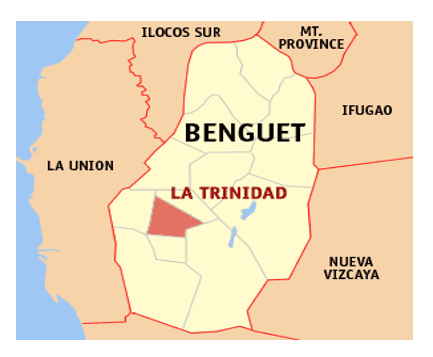How Do Schools and Community Influence Indigenous Youth's Perceptions of English?
DOI:
https://doi.org/10.51574/ijrer.v4i2.2851Keywords:
English as a dominant language, Indigenous youth, Language, Phenomenological research, PhilippinesAbstract
The increasing dominance of English in academic and social settings has significant implications for Indigenous youth, where language use in both community and school environments influences their opportunities for success and their cultural identity. This study aims to examine the impact of English proficiency on the cultural identity and language use of Indigenous youth in La Trinidad, a town in the Benguet province, Philippines, focusing on how English affects their academic achievement, social interactions, and relationships with their community. Through qualitative interviews with nine Indigenous youth, the study explores their experiences with English and Indigenous languages in daily life, school, and extracurricular activities. The findings show that while English is valued for academic success and social mobility, its dominance leads to the marginalization of Indigenous languages, causing cultural disconnection and generational divides. It is concluded that the promotion of English proficiency, though beneficial in many ways, threatens the survival of Indigenous languages and cultural heritage. To address these challenges, it is recommended that bilingual or multilingual educational programs be introduced in schools and communities to support both English language development and the preservation of Indigenous languages, ensuring that cultural identity is maintained alongside academic and professional advancement.
References
Ali, A. (2017). Influence of religion on language use: A sociopragmatic study on the influence of religion on speech acts performance [Doctoral Dissertation, University of East Anglia].
Allen, R. E., & Wiles, J. L. (2016). A rose by any other name: Participants choosing research pseudonyms. Qualitative Research in Psychology, 13(2), 149–165.
Azim, F., & Jufrizal, 1. (2020). The archaic words of Minangkabau found in Padang Lua. E-Journal of English Language and Literature, 9(1), 32–37. https://doi.org/10.24036/ell.v9i1.108064
Aziz, A., & Kashinathan, S. (2021). ESL learners’ challenges in speaking English in Malaysian classroom. International Journal of Academic Research in Progressive Education and Development, 10(2), 983–991. https://doi.org/10.6007/IJARPED/v10-i2/10355
Aziz, Z. A., Yusuf, S. B., Mustafa, F., & Munawarah, S. (2020). Acehnese archaic words in Hikayat: An early influential literary work. Lingua Cultura, 14(2), 161–169. https://doi.org/10.21512/lc.v1412.6498
Benet-Martínez, V., & Haritatos, J. (2019). Role of bilingualism and biculturalism as assets in positive psychology: Conceptual dynamic GEAR model. Frontiers in Psychology, 10(1), 1–11. https://doi.org/10.3389/fpsyg.2019.02122
Bushati, B., Kedia, G., Rotter, D., Christensen, A. P., Krammer, G., Corcoran, K., & Schmölzer-Eibinger, S. (2023). Friends as a language learning resource in multilingual primary school classrooms. Social Psychology of Education. 27(2), 833–855. https://doi.org/10.1007/s11218-023-09770-6
Cabigon, M. (2015). State of English in the Philippines: Should we be concerned? British Council. https://www.britishcouncil.ph/teach/state-english-philippines-should-we-be-concerned-2
Chairuddin, C. (2018). The shift of Acehnese language in Pulau Kampai community, North Sumatra. Language Literacy: Journal of Linguistics, Literature, and Language Teaching, 2(1), 48–57. https://doi.org/10.30743/ll.v2i1.478
Chen, L., & Wang, Y. (2021). Issues in bilingualism and heritage language maintenance: Experiences of Chinese immigrant mothers with children diagnosed with autism spectrum disorders. Journal of Multilingual and Multicultural Development, 42(8), 733–746. https://doi.org/10.1080/01434632.2020.1840123
Cohen, & Wickens. (2015). Speaking English and the loss of heritage language. The Electronic Journal for English as a Second Language, 18(4), 1–18.
Cole, J., & Feng, J. (2015). Effective strategies for improving writing skills of elementary English language learners. In Chinese American Educational Research and Development Association Annual Conference (pp. 2-24). Chicago, Chicago USA.
Cornelio, J. E., & De Castro, M. (2016). Language maintenance and loss in the Cordillera: A study of the Ifugao language. Language in Society, 35(1), 45–60.
Department of Education. (2016). Mother Tongue-based learning makes lessons more interactive and easier for students. https://www.deped.gov.ph/2016/10/24/mother-tongue-based-learning-makes-lessons-more-interactive-and-easier-for-students/
Dunifa, L. (2023). Evaluating oral English program for non-English major students: Focusing on self-assessment of students' speaking abilities and their needs. Novitas-royal (Research on Youth and Language), 17(2), 34–49. https://doi.org/10.5281/zenodo.10015757
Girl, N., César, J., & Rocha, R. (2022). Examining three crucial second language acquisition theories and their relationship in the acquisition process by a six-year-old. MEXTESOL Journal, 46(4), 1-12. https://files.eric.ed.gov/fulltext/EJ1374047.pdf
Gonzalez-Barrero, A. M., Salama-Siroishka, N., Dubé, D., Brouillard, M., & Byers-Heinlein, K. (2020). Effects of language dominance on home reading practices of bilingual families. International Journal of Bilingualism, 25(1), 77–99. https://doi.org/10.1177/1367006920938153
Hernandez, R., & Duguiang, J. (2019). Challenges in implementing MTB-MLE curriculum: A case study. International Journal of Multilingual Education, 1(1), 10–23. http://dx.doi.org/10.33805/2576.8484.103
Hossain, K. I. (2024). Reviewing the role of culture in English language learning: Challenges and opportunities for educators. Social Sciences & Humanities Open, 9, 100781.
Huang, H., & Chen, Y. (2022). The influence of partial English immersion programs on Taiwanese kindergartners' perceptions of their native Chinese language and culture. Asia Pacific Journal of Education, 42(1), 1–14. https://doi.org/10.1080/02188791.2021.1878456
Humeidat, A. R. (2018). Assessing al-koura rural dialect archaic vocabulary among the young generation. International Journal of Linguistics, 10(4). https://doi.org/10.5296/ijl.v10i4.13457
Iwaniec, J. (2018). The effects of parental education level and school location on language learning motivation. The Language Learning Journal, 48(3), 1–15. https://doi.org/10.1080/09571736.2017.1422137
Karpava, S. (2022). The interrelationship of family language policies, emotions, socialisation practices and language management strategies. Journal of Home Language Research, 5(1), 1–23. https://doi.org/10.16993/jhlr.44
Khawaja, M. (2021). Consequences and remedies of Indigenous language loss in Canada. Societies, 11(3), 1–12. https://doi.org/10.3390/soc11030089
Kim, H. J., & Park, S. (2020). Heritage language maintenance and development among Asian immigrant families: A focus on Korean and Chinese youth. Journal of Language, Identity & Education, 19(5), 389–402. https://doi.org/10.1080/15348458.2020.1771234
Komisyon sa Wikang Filipino [Commission on the Filipino Language]. (2018). Kapasiyahan ng kalupunan ng mga komisyoner blg 18-33 serye 2018 [Decision of the board of commissioners no. 18-33 series 2018]. Komisyon ng Wikang Filipino.
Kuo, F.-O., Yu, P.-T., & Hsiao, W.-H. (2015). Develop and evaluate the effects of multimodal presentation system on elementary student learning effectiveness: Within classroom English learning activity. Procedia - Social and Behavioral Sciences, 176(1), 227–235. https://doi.org/10.1016/j.sbspro.2015.01.465
Luczaj, K., Leonowicz-Bukala, I., & Kurek-Ochmanska, O. (2022). English as a lingua franca? The limits of everyday English-language communication in Polish academia. English for Specific Purposes, 66, 3-16.
Malabonga, A. J. (2016). Language shift and attrition in Cordillera: The case of Kalinga. Linguistic Journal of the Philippines, 25(2), 53–67.
Muklis, M., Noor, W. N., & Yuandari, S. (2020). Foreign language acquisition at elementary level education in Samarinda. Indonesian Journal of English Language Teaching and Applied Linguistics, 4(2), 337–348. https://doi.org/10.21093/ijeltal.v4i2.526
Paradis, J., & Jia, R. (2017). Bilingual children's long‐term outcomes in English as a second language: language environment factors shape individual differences in catching up with monolinguals. Developmental science, 20(1), e12433.
Pelila, J. R. O., & Ayao-ao S. L. (2024). How significant is the role of family socioeconomic status in archaism among Kankanaey speakers? E-Journal of English Language and Literature, 13(1), 167–168. https://doi.org/10.24036/ell.v13i1.127041
Purcia, E. L., & Castante, N. S. (2023). Abrogating mother-tongue multilingual education in the Philippines: the lens of MTB-MLE teachers in public elementary schools. American Journal of Multidisciplinary Research and Innovation, 2(4), 83–92. https://doi.org/10.54536/ajmri.v2i4.1818
Rokiah, M., & Zainuddin, Z. (2020). Language attitudes among bilingual youth in Malaysia: Heritage language maintenance or assimilation?. Journal of Language Studies, 20(1), 45–58.
Rola, R. (2017). Mother tongue-based multilingual education: A model for southeast Asia. Asian Development Bank. https://www.adb.org/sites/default/files/publication/176282/ino-mother-tongue-multilingual-education.pdf
Sada, E. Y., Bulbula, D. A., & Bulti, T. A. (2023). EFL teachers’ and students’ attitudes and practices regarding oral communication in English classes: Ethiopian high school context. International Journal of Language Education, 7(2), 255–270. https://doi.org/10.26858/ijole.v7i2.23062
Sasum, S., & Weeks, B. (2018). Why some Thai students cannot speak English fluently?. Proceeding to the RSU International Research, Rangit University, Thailand. https://rsucon.rsu.ac.th/files/proceedings/inter2018/G4-IN18-021.pdf
Sepyanda, M. (2017). The importance of English in elementary school curriculum. English Language Teaching and Research, 1(1), 206–216. https://ejournal.unp.ac.id/index.php/eltar/article/view/8722/6719
Sukrutrit, P. (2023). Students’ perceptions of speaking English in front of the class versus speaking English via self-recorded videos posted on a private Facebook group. LEARN Journal: Language Education and Acquisition Research Network, 16(1), 272–295. https://so04.tci-thaijo.org/index.php/LEARN/article/view/263442
Walczak, A., Harrison, G., Muratorio, M., Flores, C., Brunner, S., & Docherty, C. (2017). Which factors affect English language attainment? A study of school students in Chile. Research Notes, 65(1), 51–65.
Walker, G., & Crawford, B. (2024). Mahogany: a historical geography of a lasting commodity of 18th-century enslavement. Geography, 109(3), 163-168.
Wang, Y. (2023). Factors affecting children’s language development: A systematic review. Journal of Education, Humanities and Social Sciences, 8(1), 2089–2093. https://doi.org/10.54097/ehss.v8i.4650
Zarei, N., & Tagadiad, M. J. (2024). Maintaining the Heritage Language in the Family’s Linguistic Cocktail. Asia Pacific Journal of Social and Behavioral Sciences, 22, 1-16.
Zhang, Y., & Mi, Y. (2019). Maintaining Chinese as a heritage language in interlingual families: The role of family language policy. International Journal of Bilingual Education and Bilingualism, 22(3), 307–320. https://doi.org/10.1080/13670050.2017.1380213

Downloads
Published
How to Cite
Issue
Section
License
Copyright (c) 2025 Liaa Eve Dalilis Tacio, John Rey Osben Pelila

This work is licensed under a Creative Commons Attribution-ShareAlike 4.0 International License.









1.png)













